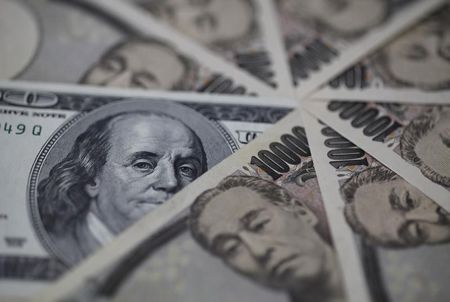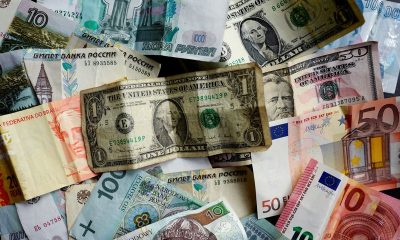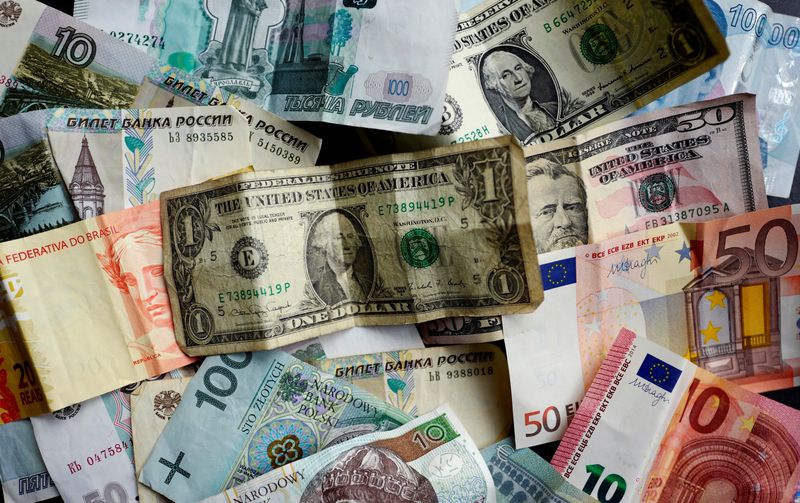Forex
Asia FX firms as rate cut bets pressure dollar; Japanese yen lags

Investing.com– Most Asian currencies firmed on Friday as persistent bets on U.S. interest rate cuts put the dollar on course for a fourth straight week in red, while the Japanese yen fell further amid improving risk sentiment.
While the dollar rebounded from near seven-month lows on Thursday, it was still headed for weekly losses amid growing conviction that the Federal Reserve will cut interest rates in September.
This notion spurred some flows into Asian markets, although uncertainty over China and expectations of a smaller rate cut by the Fed still kept gains in local currencies limited.
Japanese yen weakens as safe haven demand fades
The Japanese yen firmed slightly on Friday but was among the worst performing Asian currencies this week, as improved risk appetite sapped safe haven demand for the currency.
The yen’s pair fell 0.2% on Friday but was up 1.6% this week, with the pair moving closer to the 150 yen level. It had fallen as low as 141 yen last week amid a tumble in global risk-driven markets.
Still, the outlook for the yen appeared strong, especially as gross domestic data this week showed the Japanese economy was picking up on the back of stronger wages. Strength in the economy is expected to give the Bank of Japan more headroom to raise interest rates further.
Dollar heads for weekly losses, recession fears ease
The and both fell slightly in Asian trade, and were set to lose about 0.2% this week- their fourth straight week in red.
Stronger-than-expected data for July offered some strength to the dollar on Thursday, while also further soothing fears of a recession.
But soft inflation data released earlier this week spurred increased bets that the Fed will cut rates in September, albeit by 25 basis points instead of earlier expectations for a 50 bps cut, according to .
Still, the prospect of lower rates kept the dollar under pressure, while improving risk appetite also spurred flows into higher-yielding currencies.
Among other Asian currencies, the Chinese yuan’s pair fell 0.2%, but was set to rise slightly for the week. A swathe of mixed economic readings on China did little to improve sentiment towards the yuan, as did assurances of more stimulus measures from Beijing.
Focus now turns to a decision by the People’s Bank of China on its benchmark next week, after the PBOC unexpectedly cut rates in July.
The Australian dollar’s pair rose 0.2%, while the New Zealand dollar’s pair rose 0.5% even as Reserve Bank of New Zealand Governor Adrian Orr flagged at least 50 basis points of rate cuts this year.
The South Korean won’s pair fell 0.4%, while the Singapore dollar’s pair fell 0.1%.
The Indian rupee’s pair fell slightly but remained in sight of record highs of over 84 rupees.

 Forex3 years ago
Forex3 years agoForex Today: the dollar is gaining strength amid gloomy sentiment at the start of the Fed’s week

 Forex3 years ago
Forex3 years agoUnbiased review of Pocket Option broker

 Forex3 years ago
Forex3 years agoDollar to pound sterling exchange rate today: Pound plummeted to its lowest since 1985

 Forex3 years ago
Forex3 years agoHow is the Australian dollar doing today?

 Cryptocurrency3 years ago
Cryptocurrency3 years agoWhat happened in the crypto market – current events today

 World3 years ago
World3 years agoWhy are modern video games an art form?

 Commodities3 years ago
Commodities3 years agoCopper continues to fall in price on expectations of lower demand in China

 Economy3 years ago
Economy3 years agoCrude oil tankers double in price due to EU anti-Russian sanctions


























